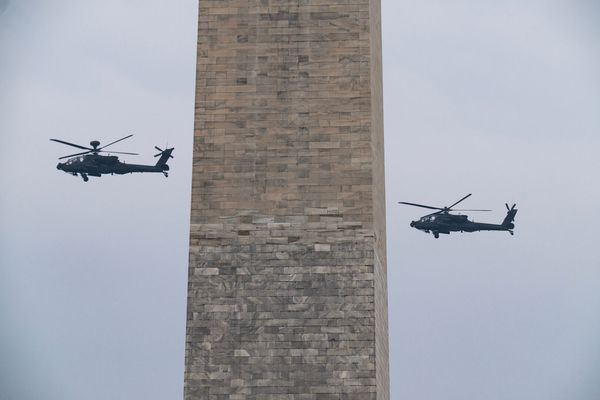In Gaza City, Palestinians are fleeing a renewed Israeli assault to take control over the area, following days of air strikes that have killed dozens. Just days earlier in Cairo, Hamas officials announced their acceptance of a ceasefire proposal following negotiations with Qatari and Egyptian mediators – a deal now probably derailed by the assault. And across Israel, hundreds of thousands of Israelis demonstrated against Benjamin Netanyahu’s handling of the war, demanding an end to fighting and the return of hostages.
It may be tempting to view Hamas’s announcement, combined with the protests, as potential turning points. But for many in the region, and with Israel beginning a new ground offensive in Gaza, this week’s headlines look all-too familiar.
Gaza City has been pummelled repeatedly throughout the 22-month war. Hamas has initially responded positively to various ceasefire proposals over the past year that have then broken down in negotiations. And Israelis turned out for massive protests nearly a year ago against the government’s failure to reach a ceasefire-for-hostages deal. Weekly protests have continued since in both Tel Aviv and Jerusalem, to no avail.
Indeed, after spending the past month in the region, I find it hard to envisage an end to the violence any time soon. As one Israeli reservist told me: “Last year at this time, I didn’t imagine there could possibly be another year of war. Now, it’s hard to imagine there not still being a war in another year from now.” So where do things go from here?
Even before Israel’s renewed offensive, a ceasefire deal looked highly unlikely. This is despite the fact that the proposal accepted by Hamas is reportedly “98% similar” to the US-backed phased plan from July. This called for a 60-day truce, which would see about half of the hostages released while the two sides negotiate a lasting ceasefire. Hamas has also reportedly eased its demands regarding two of the major sticking points from the summer’s negotiations, namely the number of Palestinian prisoners serving life sentences to be released as part of the deal (reduced from from 200 to 150), and the size of an Israeli buffer zone along the Gaza border (increased from 800 metres to one kilometre).
But the Israeli government has said it is no longer interested in a partial or phased deal, only a comprehensive agreement that would see all the hostages freed. While Netanyahu has not formally ruled out the current offer, various members of his governing coalition have already rejected it.
Israel and Hamas remain far apart regarding what “ending the war” actually means. Hamas has long maintained that an end to the war means the withdrawal of Israeli troops from Gaza and a guarantee that any truce be permanent. Meanwhile, Israel’s security cabinet has approved a five-point plan for ending the war that, along with the return of the hostages, includes disarming Hamas, demilitarising Gaza, and taking security control of the Strip, as well as establishing “an alternative civil administration that is neither Hamas nor the Palestinian Authority”.
Aside from the hostage release, all of these points present major challenges, especially disarming Hamas and “security control”. Given Hamas’s depleted state, some argue that Hamas might be willing to decommission weapons as part of a negotiated disarmament, demobilisation and reintegration process, similar to the IRA in Northern Ireland or the Farc in Colombia. But this would require disarmament happening in the context of a broader long-term political agreement.
This was part of the logic behind a July declaration endorsed by all Arab League states, calling on Hamas to disarm to open up a pathway for a Palestinian state. But, given that the Netanyahu government has rejected any negotiations towards a two-state solution, Hamas’s leadership in Gaza is not likely to disarm if it is seen purely as surrendering.
Israel’s intention to maintain “security control” in Gaza arguably represents an even greater impasse to reaching a ceasefire. This is not a new position. Netanyahu articulated a plan for security control in February 2024, and has spoken openly of reoccupying Gaza since May 2025.
The government has also discussed plans to annex parts of Gaza, and continues to explore options for “resettling” Gazans to third countries – a move that would amount to forcible transfer under international law. And as the military moves forward this week with plans to retake Gaza City, all signs are pointing to a long-term or permanent Israeli presence inside Gaza.
Israeli opposition, Hamas division
These moves are happening on the backdrop of growing public wariness in Israel, where polls show more than 70% of Israelis supporting a negotiated end to the war to free the hostages. Furthermore, many view the plans to retake Gaza City as both endangering the remaining hostages in the short term and creating new security problems for Israel in the long term, as well as keeping thousands of reservists deployed.
In addition to this past week’s protests, a group of more than 600 Israeli security and intelligence officials wrote a letter earlier this month stating that Hamas no longer poses a strategic threat to Israel, and calling for an end to the war. Notably, the letter was sent to the US president, Donald Trump, whom most officials I spoke with agreed is the only person with the leverage to nudge Netanyahu towards a ceasefire.
Identifying external leverage for Hamas is equally difficult. There have long been internal rifts within Hamas, especially between the so-called pragmatists and ideologues. These internal divisions have multiplied over the course of the war as the group struggles to maintain a coherent vision amid the Israeli assassinations of most of its leadership and the weakening of its regional backers, Iran and Hezbollah.
As such, even when Qatari and Egyptian mediators manage to extract concessions from Hamas negotiators, they are often rebuffed by leaders and operatives in Gaza, where the group views mere survival as a form of victory. Indeed, even though Hamas’s military capabilities have been largely depleted, they maintain the capacity to sustain a long campaign of guerrilla warfare.
As both Netanyahu and Hamas prolong the war for their own survival, they appear to be locked in a mutually destructive cycle. But it’s Gaza’s civilians and the Israeli hostages who continue to bear the consequences.
Julie M. Norman does not work for, consult, own shares in or receive funding from any company or organisation that would benefit from this article, and has disclosed no relevant affiliations beyond their academic appointment.
This article was originally published on The Conversation. Read the original article.







